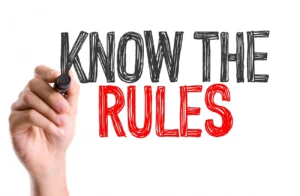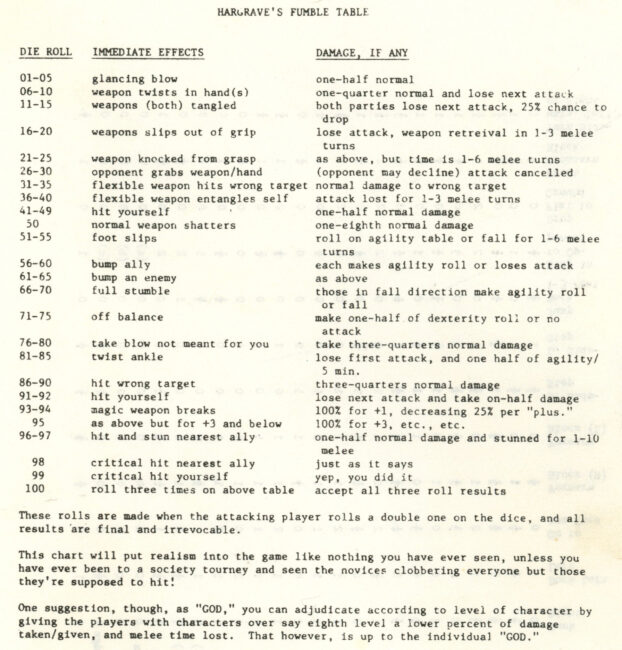 Part of an ongoing series of 5e (2014) Rules notes. Also included are for notes on 5.5e (2024) rules.
Part of an ongoing series of 5e (2014) Rules notes. Also included are for notes on 5.5e (2024) rules.
One of D&D 5e’s strengths is trying to keep things simple. There’s a fair amount of complexity, but after 4e’s highly tactical structure, 5e leans on the KISS principle where it can.
That said, the DMG provides all sorts of optional rules that can add in a bit of crunchiness to things, or a bit of complexity (fun fact: Feats are optional rules.). Early on in my Princes of the Apocalypse campaign, I decided the following would not be part of my game, and I had no regrets.
Flanking
I gave some very serious thought to using the optional Flanking rules from the DMG (p. 251):
Flanking on Squares. When a creature and at least one of its allies are adjacent to an enemy and on opposite sides or corners of the enemy’s space, they flank that enemy, and each of them has advantage on melee attack rolls against that enemy.
When in doubt about whether two creatures flank an enemy on a grid, trace an imaginary line between the centers of the creatures’ spaces. If the line passes through opposite sides or corners of the enemy’s space, the enemy is flanked.
I’ve been playing D&D with miniatures my entire gaming career (hex and squares), so the whole “Theater of the Mind” that 5e tries to get back to after the uber-tactical 4e is, for me, just not something I can do. As such, Flanking (which was big in 3, 3.5, and 4) feels natural. “Get on either side of that dude; he can’t protect himself from all directions.”
The consensus (though not unanimous) conclusion of the Internet is that the 5e Flanking rule doesn’t work well:
- Advantage is too big of an, um, advantage for this (“Advantage is an enormous benefit that lands 13 or higher 50% of the time, is almost twice as likely to crit, and has 1/20th times as likely to botch.”).
- Maneuverability in combat is now easy enough (previous editions allowed Opportunity Attacks when walking around an opponent) that Flanking allows Advantage to come up too often, unbalancing everything (and deprecating a lot of other rules / Feats / actions that provide Advantage).
It’s been suggested that, as a house rule, rather than Advantage, a small uptick in the To Hit could be given (e.g., +1 or +2). This, though, flies in the face of 5e’s philosophy to avoid those endless kind of plusses/minuses that became overwhelming (it’s thought) in 4e and slowed everything down; that was the point of the Advantage/Disadvantage rules. (Roll20 makes it a little easier, but I understand their point.)
One suggestion I’ve also seen is that the Help move (PHB 192) takes the place of Flanking:
Alternatively, you can aid a friendly creature in attacking a creature within 5 feet of you. You feint, distract the target, or in some other way team up to make your ally’s attack more effective. If your ally attacks the target before your next turn, the first attack roll is made with advantage.
Help is way-underutilized as a move; for player characters, there’s always a “But I want to be the one to hit him!” feeling. But the suggestion has been made that, esp. against a powerful opponent, this maneuver actually does more net good by helping a high-damage person hit more reliably, and its use doesn’t break anything.
So, for the time being, I don’t do the optional Flanking rules.
(Flanking was not included in the new PHB or DMG for 5.5e, even as an optional rule.)
Facing
I am also don’t using the optional Facing rules (DMG 252), which are pretty crunchy and, honestly, are more of a PitA on a VTT because of the need to define facing of, and perform rotation on, the tokens. 5e has a sort of situational awareness vibe going on, and, as an Ease of Use rule, I’m fine with that.
(Facing was also not included in the new PHB or DMG for 5.5e, even as an optional rule. 5.5e dropped a lot of optional rule suggestions from the new DMG.)
Fumbling
This isn’t actually a 5e optional rule, but I grew up with Fumbling — having some sort of ill effect happen on a Nat 1, beyond just missing — being a Big Thing, and everyone sill always laughs about what happens when someone (preferably not them) rolls really poorly.
(A Nat 1 in combat is an automatic miss, which is about as Fumbly as 5e is willing to go.)
I eventually ran accross a ThinkDM article with the best reason for not having Fumbles (Nat 1 rolls) “do something bad,” especially in combat.
As characters advance, they get (in most classes) the ability to make multiple attacks each turn. This is particularly true with Fighters, who eventually can be making four attacks in a turn.But if you have a 5% (1/20) chance of fumbling in any given attack, the cumulative chances of fumbling in a round begin to climb …

Missing is bad enough; a more disastrous effect becomes counterintuitive. Or, as the article notes, “A level 20 Fighter shouldn’t be dropping their weapon every 30 seconds.”
(A thought that comes to mind is having the “fumble” effect/table kick in only on the last attack of someone’s chain. So our intrepid fighter still only has a 5% chance in any given round, and if they want to play it uber-safe, they can sacrifice their last attack as they “take their time.” I’m not going to do that, but it would ameliorate a lot of the concern.)
Of course, a lot of that depends on the fumble table one uses. This was a matrix that described the “special effect” that came with a fumble — not just a miss, but a humiliating miss. This one, from the Arduin Grimoire, was all the rage back in my college days (though in those distant times it was rendered in cuneiform on clay tablets):

It was a simpler, more blood-thirsty time.
Still, at the level of abstraction 5e runs at, there’s really no good cause for this that can’t be covered by color text or, in case of a real run of bad luck, a symbolic penalty of some sort. That’s up to the GM to adjudicate.
Anyway, math.
ADDENDUM: Here’s an additional ThinkDM rule idea: a Fumble only occurs if you fumble all of your attacks on your turn. That means that higher-level folk are much, much less likely, though it can be, um, very unfortunate for a 1st level fighter.
An even better alternative raised in the comments there would be to have a Crit or a Fumble provide Advantage/Disadvantage for the next roll for 1 turn. If I were going to adopt anything as a house rule (which I don’t think I am), it would probably be this last one.

One thought on “D&D 5e/5.5e Rules – Flanking, Facing, and Fumbling!”